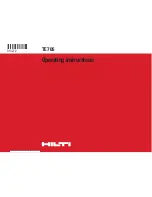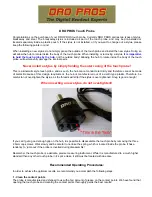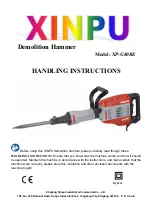
5
5.
Do not overreach. Keep proper footing and balance at all times. Proper footing and
balance enables better control of the tool in unexpected situations.
6.
Use safety equipment. Always wear eye protection. Dust mask, non-skid safety
shoes, hard hat, or hearing protection must be used for
appropriate conditions.
LASER SAFETY
1.
This tool emits laser radiation. Avoid direct eye exposure of any kind. Do not stare
directly at the laser beam, or project beam into eyes of others.
2.
Laser is not to be used if tool is at eye level, or being operated on reflective
Surfaces. This causes the laser beam to be projected into your eyes or eyes of
bystanders.
TOOL USE AND CARE
1.
Use clamps or other practical ways to secure and support the work piece to a stable
platform. Holding the work by hand or against your body is unstable and may lead to
loss of control.
2.
Do not force tool. Use the correct tool for your application. The correct tool will do
the job better and safer at the rate for which it is designed.
3.
Do not use tool if trigger switch does not turn ON or OFF. Any tool that cannot be
controlled with a trigger switch is dangerous and must be repaired.
4.
Disconnect the plug form the power source before making any adjustments,
changing saw blades or storing the tool. Such preventive safety measures reduce the
risk of starting the tool accidentally.
5.
Store idle tools out of reach of children and other untrained persons. Tools are
dangerous in the hands of untrained users. They should be kept away from work
area.
6.
Maintain tools with care. Keep saw blades sharp and clean. Properly maintained
tools, with sharp cutting edges are less likely to bind and are easier to control.
7.
Check for misalignment or binding of moving parts, breakage of parts and any other
condition that may affect the tools operation. If damaged, have the tool serviced
before using. Many accidents are caused by poorly maintained tools.
8.
Use only accessories that are recommended the manufacture for your model.
Accessories that may be suitable for one tool may become hazardous with used on
another tool
SERVICE
1.
Tool service must be performed only by qualified repair personnel. Service or
maintenance performed by unqualified personnel could result in a risk of injury.
2.
When servicing a tool, use only identical replacement parts. Follow instructions in the
maintenance section of this manual. Use of unauthorized parts or failure to follow
Maintenance Instructions may create a risk of electric shock or injury.
SAVE THESE INSTRUCTIONS!































